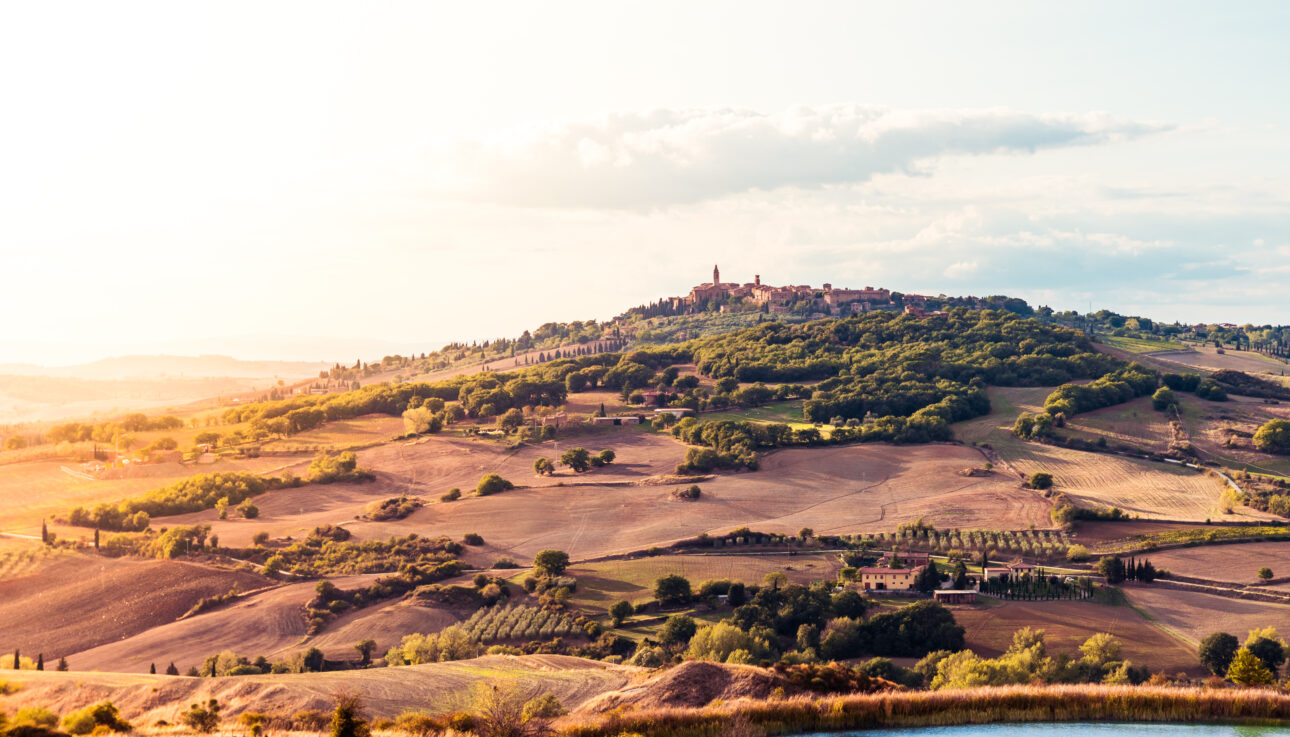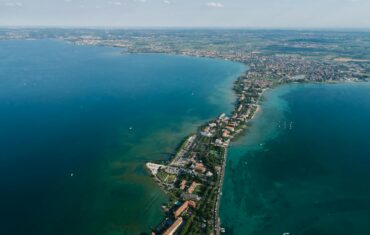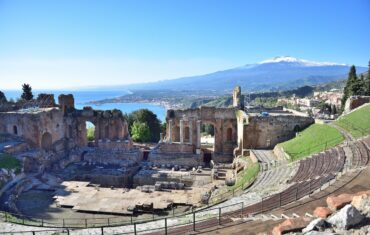Tuscany is world-renowned for its wine, but the region offers so much more than vineyards and cellars. From stunning art and architecture to breathtaking landscapes and culinary delights, Tuscany is a treasure trove of experiences waiting to be discovered. Here’s a guide to enjoying the many activities Tuscany has to offer beyond its famous wines.
Explore the Art and Architecture of Florence
Florence, the capital of Tuscany, is a hub of Renaissance art and architecture. The city is home to some of the world’s most famous museums, churches, and historical landmarks.
- Uffizi Gallery: This iconic museum houses a vast collection of Renaissance masterpieces, including works by Botticelli, Leonardo da Vinci, and Michelangelo. Highlights include Botticelli’s “The Birth of Venus” and Leonardo’s “Annunciation.”
- The Duomo (Cathedral of Santa Maria del Fiore): Florence’s cathedral is a stunning example of Gothic architecture. Climb to the top of the dome, designed by Brunelleschi, for panoramic views of the city.
- Palazzo Vecchio: This medieval fortress is now a museum and town hall. Explore the ornate rooms and halls, including the impressive Salone dei Cinquecento, and climb the tower for another great view of Florence.
Visit the Historic Towns and Villages
Tuscany is dotted with charming medieval towns and villages, each with its own unique character and history. Exploring these towns is like stepping back in time.
- Siena: Known for its medieval brick buildings and the stunning Piazza del Campo, Siena is a must-visit. The city’s cathedral, the Duomo di Siena, is a Gothic masterpiece with intricate marble floors and a beautifully decorated interior. Don’t miss the opportunity to climb the Torre del Mangia for a breathtaking view of the city.
- San Gimignano: Often referred to as the “Medieval Manhattan” due to its many towers, San Gimignano is a UNESCO World Heritage site. Wander through its narrow streets, visit the Collegiate Church with its stunning frescoes, and enjoy the views from the Torre Grossa, the tallest tower in the town.
- Volterra: This ancient hilltop town has a rich Etruscan history. Explore the Roman Theatre, the Etruscan Museum, and the Medici Fortress. Volterra is also known for its alabaster, and you can visit workshops to see artisans at work.
Relax in Natural Hot Springs
Tuscany is home to several natural hot springs, where you can unwind and soak in warm, mineral-rich waters while surrounded by beautiful landscapes.
- Saturnia: Located in the Maremma region, the thermal springs of Saturnia are famous for their cascading waterfalls and warm, sulfurous waters. The natural pools at the Cascate del Mulino are open to the public and are a popular spot for relaxation.
- Bagno Vignoni: This small village in the Val d’Orcia is known for its unique central square, which is filled with thermal water. While you can’t bathe in the square’s pool, nearby thermal baths offer the chance to relax in the warm waters while enjoying views of the rolling hills.
- Bagni di Petriolo: Located between Siena and Grosseto, these ancient thermal baths have been used since Roman times. The hot springs are set in a picturesque natural setting along the Farma River, and there are both free and paid options for enjoying the thermal waters.
Explore Tuscany’s Coastline
While Tuscany is often associated with its rolling hills, the region also boasts a beautiful coastline with sandy beaches, rocky cliffs, and charming seaside towns.
- Versilia: The Versilia coast, particularly the town of Viareggio, is known for its long sandy beaches and lively atmosphere. The area is popular for swimming, sunbathing, and water sports. Viareggio also hosts an annual carnival, famous for its elaborate floats and lively parades.
- Elba Island: Part of the Tuscan Archipelago, Elba Island is a great destination for beach lovers and history buffs alike. The island offers crystal-clear waters, scenic hiking trails, and historical sites like Napoleon’s residence during his exile. The beaches range from sandy to pebble, each offering unique scenery and charm.
- Maremma Coast: This more secluded stretch of coastline is perfect for those looking to escape the crowds. The Maremma Regional Park offers pristine beaches, wild landscapes, and opportunities for birdwatching and hiking. The nearby town of Castiglione della Pescaia is a charming medieval town with a picturesque harbor.
Indulge in Tuscan Cuisine
Tuscany’s culinary heritage is as rich as its wines. The region’s cuisine is characterized by simple, high-quality ingredients that reflect the land’s bounty.
- Cooking Classes: Immerse yourself in Tuscan culinary traditions by taking a cooking class. Many classes are held in beautiful farmhouses or villas and teach you how to prepare classic dishes like ribollita (a hearty bread and vegetable soup), pappa al pomodoro (a tomato and bread soup), and homemade pasta.
- Truffle Hunting: The forests of Tuscany, particularly around San Miniato, are known for their truffles. Join a truffle hunting tour where you can learn about the art of finding these precious fungi, often accompanied by a trained dog. After the hunt, enjoy a meal featuring the truffles you’ve found.
- Cheese Tasting: Tuscany is famous for its pecorino cheese, particularly Pecorino di Pienza. Visit local dairies to learn about the cheese-making process and sample a variety of pecorino cheeses, from fresh to aged.
Discover the Etruscan Heritage
Long before the Romans, the Etruscans inhabited Tuscany. Their legacy is still visible today in the region’s ancient sites and museums.
- Cortona: This hilltop town was an important Etruscan settlement. Visit the MAEC (Museum of the Etruscan Academy) to see a vast collection of Etruscan artifacts, including bronze statues, pottery, and jewelry. The town’s Etruscan walls and tombs are also worth exploring.
- Tarquinia: Known for its Etruscan necropolises, Tarquinia is a UNESCO World Heritage site. The painted tombs in the Necropolis of Monterozzi provide a rare glimpse into Etruscan life and beliefs. The nearby National Archaeological Museum houses an impressive collection of Etruscan art and artifacts.
- Volterra: In addition to its medieval and Roman heritage, Volterra was once a major Etruscan city. The Guarnacci Etruscan Museum in Volterra is one of the oldest public museums in Europe and contains an extensive collection of Etruscan funerary urns, statues, and artifacts.
Enjoy Outdoor Activities and Nature
Tuscany’s diverse landscapes make it an ideal destination for outdoor enthusiasts. Whether you prefer hiking, biking, or horseback riding, there are plenty of ways to explore Tuscany’s natural beauty.
- Hiking in the Apuan Alps: This mountain range in northern Tuscany offers rugged terrain and spectacular views. The Apuan Alps are known for their marble quarries, including the famous Carrara marble. Hiking trails range from easy walks to challenging climbs, and the region is also popular for caving and rock climbing.
- Cycling in the Val d’Orcia: The scenic roads of the Val d’Orcia, a UNESCO World Heritage site, are perfect for cycling. The rolling hills, cypress-lined roads, and picturesque villages like Pienza and Montalcino make for a memorable ride. Guided tours are available for those who prefer a more structured experience.
- Horseback Riding in the Maremma: The Maremma region, with its wild landscapes and historic ranches, is a great place for horseback riding. Ride through forests, along the coast, or across open fields, and experience Tuscany’s natural beauty from a different perspective.
Visit Tuscany’s Gardens and Villas
Tuscany is home to some of Italy’s most beautiful gardens and historic villas, offering a glimpse into the region’s aristocratic past.
- Boboli Gardens: Located in Florence behind the Pitti Palace, the Boboli Gardens are one of the most famous examples of Italian Renaissance gardens. The gardens feature elaborate fountains, statues, and grottos, as well as stunning views of Florence.
- Villa Reale di Marlia: Located near Lucca, this villa and its gardens are a masterpiece of Italian landscape design. The gardens are divided into several themed sections, including a water garden, a lemon garden, and a camellia walk. The villa itself is also open to visitors and showcases elegant interiors.
- Villa La Foce: This 15th-century villa in the Val d’Orcia is surrounded by gardens designed by the English architect Cecil Pinsent. The gardens feature formal terraces, boxwood hedges, and panoramic views of the surrounding countryside. Guided tours are available, offering insight into the villa’s history and design.
Tuscany’s allure extends far beyond its renowned wines. Whether you’re exploring its artistic heritage, relaxing in natural hot springs, or discovering its ancient history, Tuscany offers a wealth of experiences. Embrace the diversity of this beautiful region and uncover the many facets of Tuscany that make it a truly unforgettable destination.









